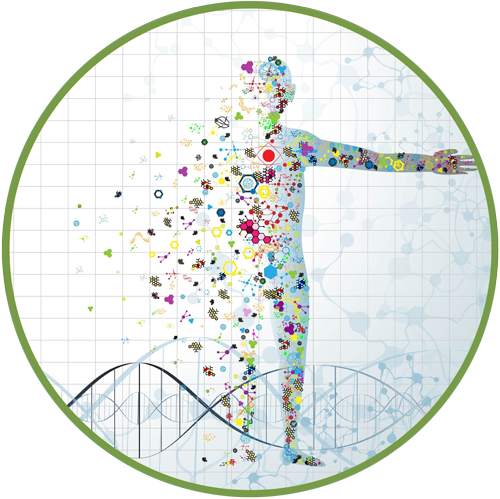Proceedings: DIA Europe 2018

The Exciting Future of Pharmacovigilance
Chris M. Slawecki
DIA Senior Digital Copyeditor
he current pharmacovigilance landscape in the EU has been mostly shaped by the Pharmacovigilance Legislation which came into effect in 2012. Since then, innovations in pharmacovigilance (PV) science and technology, and collaborative projects on the European and international levels, have kept this field moving forward.
Since then, innovations in pharmacovigilance (PV) science and technology, and collaborative projects on the European and international levels, have kept this field moving forward.
EudraVigilance has catalyzed an explosion in safety data and reporting. But does an increased volume of safety data automatically equate to an increase in meaningful safety information? Are we learning anything from these data, or simply adding more hay to our haystack as we search for our elusive PV needle?
Key Takeaways
- Innovation, innovation, innovation!
- Innovative regulatory and legislative frameworks enable more innovative technologies and systems
- Global harmonization and pragmatic implementation ensure minimal regulatory burden and maximum patient protection
- Pharmacovigilance science and technology continue to advance quickly
- To create a future where all patients are equally protected regardless of where they live, collaboration among all international stakeholders (industry, regulators, patients, healthcare professionals, WHO, Gates Foundation, etc.) is essential
- Do we know how to measure the true impact of PV?
Why this is important: “Both industry and regulators, we’re struggling with, ‘What is it we can do in order to better understand the impacts of regulatory decisions? And are those decisions and those communications really driving the change in behaviors and allowing patients to benefit from our products to the maximum potential of those products?’” explained Vicki Edwards, Vice President, Pharmacovigilance Excellence & QPPV AbbVie. “The significance of the session is that it indicated that technology and advancing pharmacovigilance science is really moving forward quickly, and we have to be in front of that.”
Pharmacovigilance Legislation
The pharmacovigilance legislation provides the legal basis for collaboration between the EMA and EU Member States’ competent authorities to continuously develop pharmacovigilance systems capable of achieving high standards of public health protection for all medicinal products, and monitor the outcomes of risk minimization measures. It introduced new tasks and streamlined existing responsibilities for regulators and industry in four main areas:
- Collection of key information on medicines
- Analysis and understanding of data and information
- Regulatory action to safeguard public health
- Communicating with stakeholders.
The EU Regulatory Network and all its stakeholders have responsibility in collecting data and information on regulatory measures to:
- Ensure they are effective and efficient
- Continuously drive process improvement
- Monitor the effectiveness of risk minimization.
Innovation, Innovation, Innovation
“Innovation, innovation, innovation,” Vicki said. “I don’t think there was a single topic where we weren’t talking about something new and exciting, whether it was technology, whether it was methodology–there was something about every session that was forward-facing.”
Cognitive and other computing has grown in safety and pharmacovigilance:
- Through use of blockchain technology to create a single, unified adverse event reporting database that also automatically removes duplicate reports
- Through use of artificial intelligence (algorithms) to identify, extract, and process information to more quickly distinguish false from true positive signals
- It is important to combine expertise in both medicinal product safety and cognitive computing to develop and implement these and similar processes.
In addition to new data processes, pharmacovigilance systems in Europe are also incorporating new data types.
- While randomized clinical trials (RCT) generate high-certainty data in accordance with strict guidelines from known provenance, real-world data (RWD) from marketed use is much less structured, from unknown provenance, and provides less certainty
- The growing number of patients in patient support programs is further increasing the volume of real-world safety and adverse event information captured in sponsor safety databases
- Challenges remain in standardizing methods to define the strength and limitations of both data types, to transform the evidence arising from analyses into knowledge.
Measuring Impact of Pharmacovigilance
Although challenging, evaluating the health impact of PV is an iterative, evidence-based process that assesses the implementation and effectiveness of regulatory actions, including monitoring the use of medicines and stakeholder engagement in healthcare systems, and the outcomes of PV processes and activities for both established and newly authorized products.
Unfortunately, providing greater transparency into more voluminous data does not automatically create greater credibility or trust between industry, regulators, and patients. As recent controversies around vaccines have shown, data needs context to become information; more data is not always more helpful. Consistent communication among all safety stakeholders in Europe must be part and parcel of this transparency.
How might we measure the effectiveness of improved safety regulation, detection and communication?
- Increased patient and healthcare professional knowledge of risks following communication
- Changes in patient and healthcare professional behavior (e.g., prescribing patterns) in clinical practice
- Changes in morbidity/mortality.
If the aim of pharmacovigilance is to reduce harm by more appropriate use of medicines, and if we can measure the harm that is reduced by PV, then we can generate evidence about the effectiveness and public health consequences of PV at the population level, and demonstrate the importance of PV.
This article summarizes key takeaways from sessions in “Topic E: What is the Future of Pharmacovigilance?”

